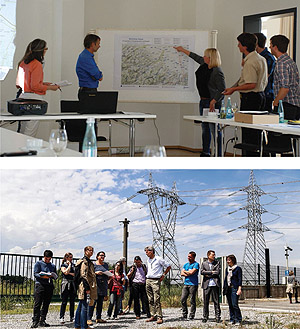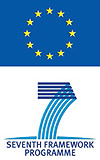 While many details of the future European
power system remain highly disputed
at national and European levels, one
parameter seems to be very clear to a vast
majority of policy-makers: the modernisation of the current
electricity infrastructure is indispensible for the further
integration of the European internal energy market as
well as the integration of increased shares of renewables.
However, the latest ACER monitoring report on PCIs
published in July 2016 showed once again: many projects
to further develop electricity grids are delayed – mostly due
to challenges related to the permitting procedure.
While many details of the future European
power system remain highly disputed
at national and European levels, one
parameter seems to be very clear to a vast
majority of policy-makers: the modernisation of the current
electricity infrastructure is indispensible for the further
integration of the European internal energy market as
well as the integration of increased shares of renewables.
However, the latest ACER monitoring report on PCIs
published in July 2016 showed once again: many projects
to further develop electricity grids are delayed – mostly due
to challenges related to the permitting procedure.
This phenomenon has been present in many European
countries over the last couple of years: it does not matter
whether they are called Monsterplyons (in the UK)
Monstertrasse (in Germany) or Monstermaster (in Norway)-
newly planned power lines are often not very popular. So what
can be done to better integrate the views, concerns and beliefs
of stakeholders into the planning and permitting procedure?
The interdisciplinary consortium of the project INSPIRE-Grid,
coordinated by RSE and comprised of research
institutes, TSOs and the stakeholder platform Renewables
Grid Initiative, has been working together for the past
three years to tackle this question. At the beginning,
the German research institute IZES took a closer look at
different stakeholder groups that are normally involved in
grid development projects – from citizens to environmental
groups, farmers to planning authorities. At the end,
psychologists from IZES came up with a stakeholder map
that captures their main findings (an interactive version can
be accessed on the INSPIRE-Grid website). Also during this
early project phase, social scientists from ETH Zurich looked
into projects, both in electricity infrastructure and other
industries, to identify and analyse existing best practices
in public participation and stakeholder engagement.
Researchers from Poliedra, Armines and RSE took a closer
look at different methodologies to include stakeholders
during the consultation and decision-making stages, namely
multi-criteria analysis, Web GIS and life-cycle assessments.
In a second phase of the project, researchers collaborated
closely with the two TSOs Statnett and RTE in order to go
out into the field and collect data in three different case
studies – Aurland-Sogndal, Bamble-Rød (both Norway)
and Cergy-Persan (France). Social scientists from PIK and
engineers from Poliedra jointly conducted interviews and
tested assumptions on MCA, LCA and Web GIS.
In the end, ETH Zurich validated the conclusions drawn
in the other work packages with the help of different
workshops both including TSO staff and external
stakeholders.
The final recommendations of the project will be published
in January and presented at the "Conference on Public
Participation - State of the art approaches to stakeholder
engagement in electricity infrastructure projects" on 25
January in Brussels. More information about this event, the
project itself and all publications are available on the project
website (www.inspire-grid.eu).

Contact details:
www.inspire-grid.eu
Stefano Maran (RSE) – Project coordinator
stefano.maran@rse-web.it
Theresa Schneider (RGI)
theresa@renewables-grid.eu